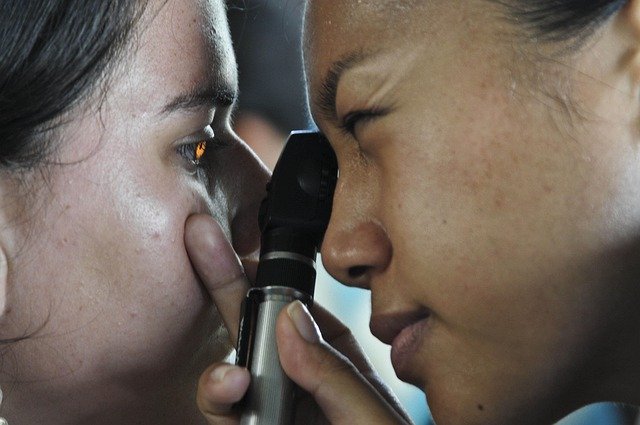Understanding LASIK Vision Institutes: Nearby Options for Improved Sight
If you’ve been considering vision correction, LASIK Vision Institutes offer a trusted and convenient solution for achieving clearer sight without glasses or contacts. These specialized centers use advanced laser technology to correct common vision problems like nearsightedness, farsightedness, and astigmatism. With numerous locations across the country, finding a nearby LASIK Vision Institute makes it easier than ever to take the first step toward improved vision and long-term eye health.

LASIK eye surgery has revolutionized the way millions of people experience vision correction. This laser-based procedure reshapes the cornea to correct refractive errors such as myopia, hyperopia, and astigmatism. For individuals tired of relying on corrective eyewear, LASIK presents a potentially life-changing solution. As the demand for vision correction continues to grow, specialized LASIK vision institutes have emerged, offering advanced technologies and comprehensive care. Knowing what to expect from these facilities and understanding the technologies they employ can help prospective patients make informed choices about their eye health.
This article is for informational purposes only and should not be considered medical advice. Please consult a qualified healthcare professional for personalized guidance and treatment.
Overview of LASIK Vision Correction
LASIK, which stands for Laser-Assisted In Situ Keratomileusis, is a surgical procedure designed to reduce or eliminate dependence on glasses or contact lenses. During the procedure, an ophthalmologist uses a specialized laser to reshape the cornea, the clear front part of the eye, allowing light to focus more accurately on the retina. This correction addresses common vision problems including nearsightedness, farsightedness, and astigmatism.
The procedure typically takes less than 30 minutes for both eyes, with most patients experiencing improved vision within 24 to 48 hours. Recovery is generally quick, and many individuals return to normal activities within a few days. LASIK has been performed on millions of patients worldwide since its approval, with high satisfaction rates reported across various studies. However, not everyone is a suitable candidate for the procedure, which is why thorough pre-operative evaluations at reputable vision institutes are essential.
What to Expect at a LASIK Vision Institute
When visiting a LASIK vision institute, patients can anticipate a comprehensive evaluation process designed to determine their candidacy for the procedure. The initial consultation typically includes a detailed eye examination, measurement of corneal thickness, assessment of refractive error, and evaluation of overall eye health. These diagnostics help the ophthalmologist determine whether LASIK is appropriate or if alternative procedures might be better suited to the individual’s needs.
During the consultation, patients should expect clear communication about the procedure, potential risks, benefits, and realistic outcomes. Reputable institutes provide transparent information about success rates, possible side effects such as dry eyes or temporary visual disturbances, and long-term expectations. The pre-operative phase also includes discussing any medical conditions, medications, or lifestyle factors that might affect the surgery or recovery.
On the day of the procedure, patients are typically given numbing eye drops to ensure comfort. The actual laser treatment is brief, and most people report feeling only slight pressure rather than pain. Post-operative care instructions are provided, including the use of prescribed eye drops, protective eyewear, and follow-up appointments to monitor healing and visual improvement.
Advanced Technologies in LASIK Procedures
Modern LASIK vision institutes utilize cutting-edge technologies that have significantly improved precision, safety, and outcomes compared to earlier techniques. Wavefront-guided LASIK, for example, creates a detailed map of the eye’s unique optical characteristics, allowing for highly customized treatment that can address even subtle imperfections. This technology has been shown to enhance visual quality, particularly in low-light conditions.
Femtosecond laser technology represents another major advancement. This bladeless approach uses ultra-fast laser pulses to create the corneal flap with exceptional accuracy, reducing complications and improving healing times. Many institutes now offer topography-guided LASIK, which uses detailed corneal mapping to guide the laser treatment, particularly beneficial for patients with irregular corneas or previous eye surgeries.
Additionally, eye-tracking systems have become standard in advanced LASIK procedures. These systems monitor eye movements during surgery and adjust the laser accordingly, ensuring precise treatment even if the patient’s eye shifts slightly. Such technological innovations have contributed to improved safety profiles and higher patient satisfaction rates.
Evaluating Local Services in Your Area
For those in Hong Kong seeking LASIK vision correction, several reputable institutes offer comprehensive services with experienced ophthalmologists and modern equipment. When evaluating local services, consider factors such as the surgeon’s qualifications and experience, the technology used, patient reviews, and the quality of pre- and post-operative care.
Visiting multiple institutes for consultations can provide valuable perspective. During these visits, ask about the specific laser systems used, complication rates, enhancement procedures if needed, and what support is available during recovery. Transparent communication about costs, financing options, and what is included in the quoted price is also important for making an informed decision.
Cost Considerations for LASIK Surgery
The cost of LASIK eye surgery can vary significantly based on the technology used, the surgeon’s experience, and the complexity of the individual case. In Hong Kong, prices typically range from HKD 10,000 to HKD 30,000 per eye, though some advanced procedures using the latest technology may cost more. These estimates generally include pre-operative evaluations, the surgery itself, and a series of follow-up appointments.
Several factors influence pricing, including whether bladeless femtosecond laser technology is used, the type of customization applied, and the reputation of the institute. Some facilities offer package pricing that covers both eyes and all associated care, while others itemize services separately. It is important to clarify what is included in the quoted price and whether additional costs might arise for enhancements or complications.
| Service Type | Technology Used | Estimated Cost Range (per eye) |
|---|---|---|
| Standard LASIK | Microkeratome blade | HKD 10,000 - HKD 15,000 |
| Bladeless LASIK | Femtosecond laser | HKD 15,000 - HKD 22,000 |
| Wavefront-Guided LASIK | Custom wavefront mapping | HKD 18,000 - HKD 25,000 |
| Topography-Guided LASIK | Advanced corneal mapping | HKD 20,000 - HKD 30,000 |
Prices, rates, or cost estimates mentioned in this article are based on the latest available information but may change over time. Independent research is advised before making financial decisions.
Making an Informed Decision
Choosing to undergo LASIK is a significant decision that requires careful consideration of multiple factors. Beyond cost and convenience, prospective patients should prioritize safety, surgeon expertise, and the quality of technology available. Reading patient testimonials, verifying credentials, and understanding the full scope of what the procedure entails can help ensure a positive experience.
It is also important to have realistic expectations. While LASIK has high success rates, individual results can vary based on factors such as age, prescription strength, and overall eye health. Some patients may still require reading glasses as they age due to natural changes in the eye, and a small percentage may need enhancement procedures to achieve optimal results.
Ultimately, the decision to pursue LASIK should be made in consultation with a qualified ophthalmologist who can assess individual circumstances and provide personalized recommendations. With thorough research and careful selection of a reputable LASIK vision institute, many people achieve significant improvements in their vision and quality of life.



